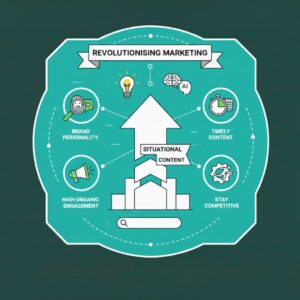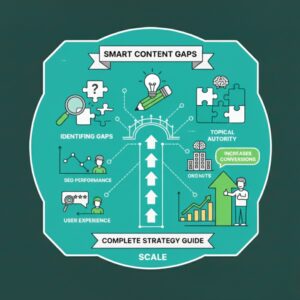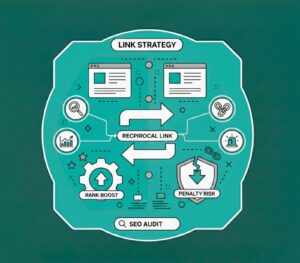Crafting Targeted Content for Every Stage of the Sales Funnel: A Complete Guide
Blogs | Category
Written By: Lauren Davison
Introduction
People do not buy right away. They explore, compare, and decide slowly. That is why smart brands plan every word they share. Using the right content for the sales funnel can guide readers from first glance to final click.
It is not about fancy language or big promises. It is about timing, trust, and clear value. Each step in the funnel needs a message that fits how people feel in that moment. Some want to learn, others want proof.
When your content matches their needs, it feels natural. This guide will walk you through how to write for every stage. You will see how carefully chosen words can build strong connections and turn quiet interest into real action.
Table of Contents
Understanding the Sales Funnel and Its Stages
A sales funnel is the journey people take before they buy. It begins with curiosity, a simple question or need. Then comes learning, interest, and finally, action. Each step shows what a person feels and what they look for next.
When you know this path, your message fits better. You guide without forcing. A clear sales funnel content strategy makes your words count. It meets people where they stand and helps them move forward at their own pace.
The Three Main Stages of the Funnel
Top of Funnel (TOFU): Awareness Stage
This is where they first meet you. They are curious, not ready to buy. Offer easy reads, short videos, or simple stories that teach and spark interest.
Middle of Funnel (MOFU): Consideration Stage
Here, people want answers. They compare and question. Give honest insights, short lessons, or useful examples that show real value.
Bottom of Funnel (BOFU): Decision Stage
This is the final step. People need a reason to trust. Use proof, reviews, results, or success stories. Keep your tone calm and sure. When belief builds, action follows.
Creating Effective Content for the Top of the Funnel (Awareness Stage)
Goal — Attract and Educate
This is the first step of connection. People do not know you yet. They are curious, looking for help, not a product. Your job is to catch their attention and teach something useful. Be the brand that gives before asking.
When someone searches for answers, meet them with clear and honest guidance. Skip the pushy tone and speak simply. Offer value they can use right away. Helpful content builds trust, and trust brings them back for more.
Best Content Types
Blogs make learning easy. Infographics turn tricky ideas into quick visuals. Short videos feel personal and hold attention. Social posts spread awareness fast. Guides or checklists give readers small wins they can act on. Mix formats to keep things fresh and natural.
Example Approach
Think of someone looking for quick advice, not products. Write short “how-to” pieces or explain trends in plain words. For instance, a healthy snack brand might post “Easy Midday Snacks to Boost Energy.” It teaches, entertains, and plants interest, no sales pitch needed.
Writing Content for the Middle of the Funnel (Consideration Stage)
Goal — Build Trust and Nurture Interest
At this stage, people already know your brand. They are thinking, comparing, and asking if you can solve their problem. Your goal now is simple: build trust. Address their pain points and provide clear answers. Show that you understand what they are facing and that your solution fits.
Instead of selling, help them picture how their problem can fade. Share value that feels honest. When people sense care and clarity, they start to trust your brand naturally.
Best Content Types
Use content that teaches and proves. Case studies show results. Newsletters keep the link alive. eBooks and webinars let you go deeper into topics that matter. Comparison guides make choices easier. Each format adds a small layer of trust without pressure.
Example Approach
Use real voices and stories. Add testimonials, expert thoughts, or quick problem-solution examples. Keep the tone calm and real. When your content for the sales funnel feels true and human, people move forward on their own.
Crafting Conversion-Driven Content for the Bottom of the Funnel (Decision Stage)
Goal — Persuade and Convert
This is the point where people decide. They have done their research and know what they want. Your role is to make that choice easy.
Focus on benefits, not noise. Show why your offer matters. Use clear words that build trust. Keep it simple, but let every line prove value. A calm tone works better than pressure. When readers see truth and confidence, they act on their own.
Best Content Types
Use content that gives proof, not promises. Product demos show how things work. Pricing pages answer what buyers wonder last. Customer stories add real voices. Free trials let people experience the value before buying. These formats make decisions feel safe and clear.
Example Approach
Use strong yet kind calls to action. Back your claims with numbers or short facts. Point out what makes you different. When your message feels real and focused on helping, you are not just selling; you are converting leads with content that earns trust.
Aligning Content with Buyer Intent and Journey
How to Map Keywords to Funnel Stages
Every search tells a story. The words people type reveal what they want and how close they are to taking action. Matching those words to each funnel stage keeps your message on point.
- At the awareness level, people look for answers. Use simple, informational keywords like “how to start,” “what is,” or “ways to improve.” These help you show up when someone begins exploring a topic. Keep it light and helpful.
- In the consideration stage, the search changes. Now they compare or seek solutions. Words like “best options,” “reviews,” or “alternatives to” guide them toward trust. Give clarity, not pressure.
- The decision stage feels sharper. Here, intent turns into action. People use brand names or phrases such as “buy,” “pricing,” or “get started.” Keep your message focused, confident, and direct.
Tracking Content Performance at Each Stage
A good strategy needs proof. Tools like Google Analytics, HubSpot, and SEMrush help you see what content works. Track how long people stay, what they click, and when they act.
If interest fades too soon, adjust tone or format. Watch small details because they reveal what moves people forward. With time, data becomes a guide, showing which words truly connect and convert.
Common Mistakes in Funnel-Based Content Strategy
Using One Type of Content for All Stages
Not every reader is in the same place. Some are learning, and others are ready to act. Using one kind of content for everyone feels flat and careless. Personalisation matters because people notice when something speaks directly to them. It shows effort and understanding.
The content feels natural when you tailor your message. The more your content matches what people need at each stage, the smoother their journey becomes.
Ignoring the Follow-Up and Retention Stage
Many brands stop talking once the sale happens. That is a big mistake. The relationship does not end at checkout. Post-purchase content builds trust and keeps buyers close.
Send updates, guides, or small thank-you notes. Share ways to use the product better. These moments remind customers they matter. Happy buyers return, talk, and bring others with them.
Bonus Tip: Turn Guidance into Growth
- A good funnel never forces a sale. It builds comfort and direction. People move forward when they trust the path, not when they are pushed.
- Keep each message tied to the buyer’s current stage of the buying process. First, share knowledge and spark curiosity. Later, give answers and simple next steps.
- Use your tone wisely. Gentle, honest words keep readers listening. They should feel guided, not targeted.
- Let data shape your moves. Watch what content brings attention, trust, and action, then adjust accordingly.
- Stay human. Real stories, real results, and real care matter more than perfect copy.
- When your funnel feels like help, not marketing, it quietly turns interest into loyalty.
Ready to Build a Smarter Funnel?
Every step in your content for sales funnel should feel natural, clear, simple, and built on trust. Great content does not chase people; it guides them.
If you want to turn attention into loyal action, let Midland Marketing help shape your strategy. We know how to craft stories that speak, connect, and convert. Start today; your next customer is already searching.
Frequently Asked Questions
- What’s a sales funnel in content marketing?
It is how people move from noticing you to buying. Each step needs its own message that feels natural, not forced.
- Why does funnel content matter?
The right words at the right time build trust. When your message fits their stage, people stay interested.
- How can I tell if my funnel content is effective?
Watch actions, not views. Use tools like Google Analytics or HubSpot to trace clicks and time spent.
- What fits the awareness stage?
Simple and useful content. Blogs, short clips, or infographics work best when you sound helpful.
- How can Midland Marketing help me?
We shape clear, people-driven plans that connect. Your story attracts attention and quietly turns interest into loyalty.

Written by - Lauren Davison
Introducing Lauren – one of our content writers who has a flair for SEO and creative strategy!
With a Master’s Degree in Creative Writing, Lauren has niched down into SEO and content writing.
Outside of work, she loves watching the darts, reading and the pub on the weekend.
Want some more?
Latest Insights & News

Revolutionising Marketing: The Rise of Situational Content Strategies
Situational content strategies involve tailoring content to specific moments, contexts, or audience behaviours. By aligning content with real-time trends, seasonal needs, and user intent, brands can increase relevance, improve engagement, and strengthen SEO performance.

Smart Ways to Identify and Fill Content Gaps Fast: A Complete Strategy Guide
Content gaps refer to missing information, unanswered questions, or underserved topics in your existing content. Identifying these gaps helps you create targeted, high-value pages that improve search visibility, satisfy user intent, and outperform competitors.

Reciprocal Links in SEO: Do They Still Boost Rankings or Risk Penalties?
For the keyword “reciprocal links SEO,” focus on explaining how reciprocal linking works today. Reciprocal links are not harmful by default, but Google can flag excessive or manipulative link exchanges. To stay safe, only exchange links when they are contextually relevant, natural, and valuable to users.




